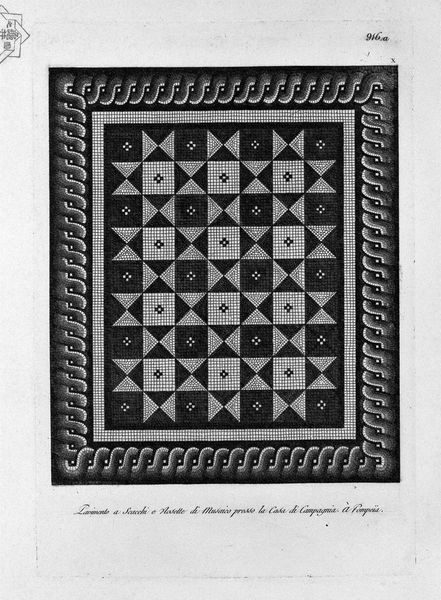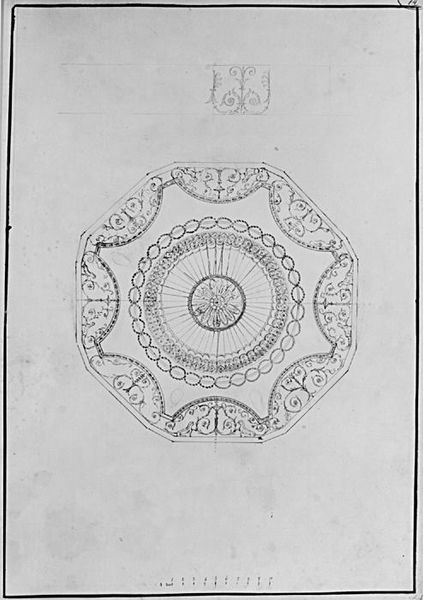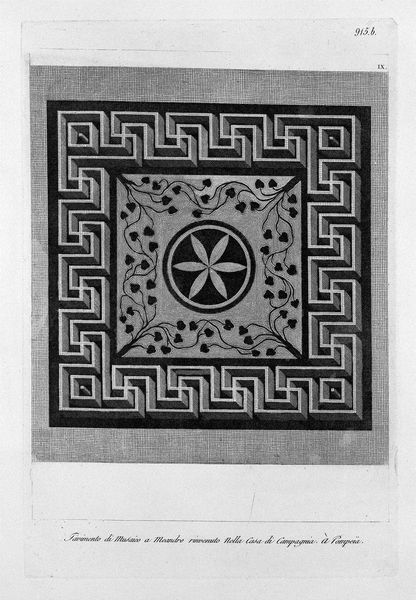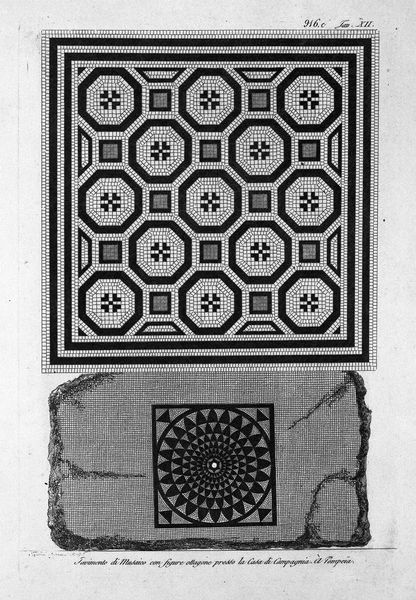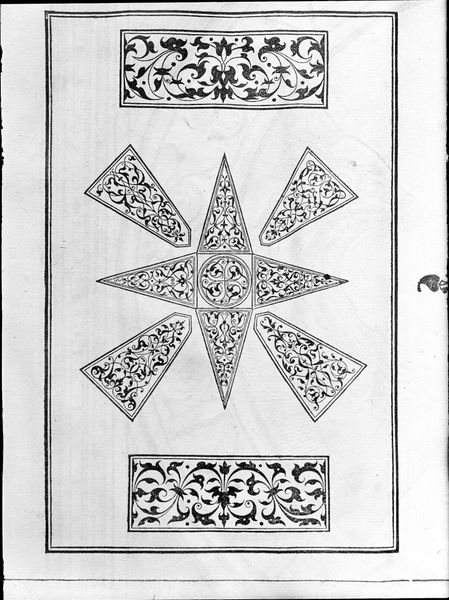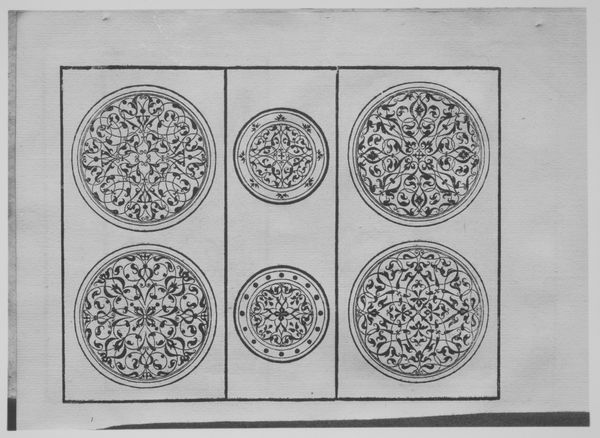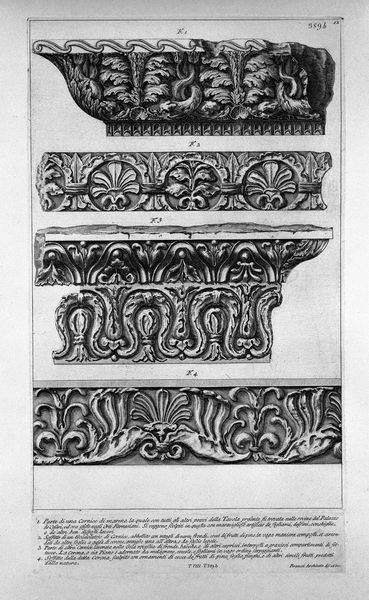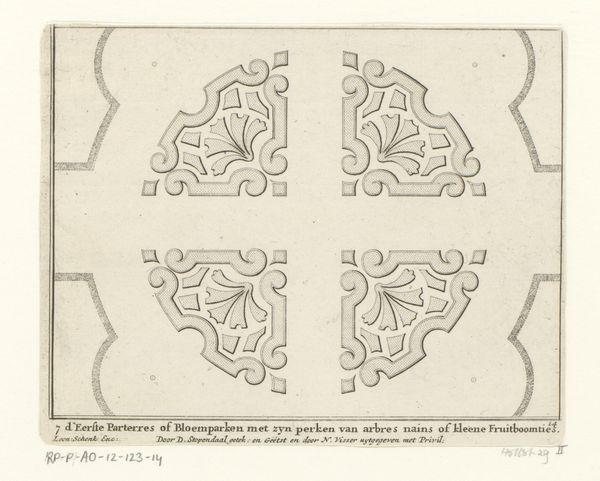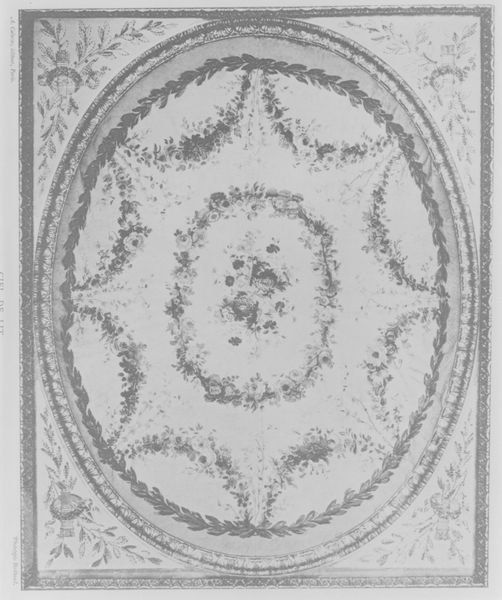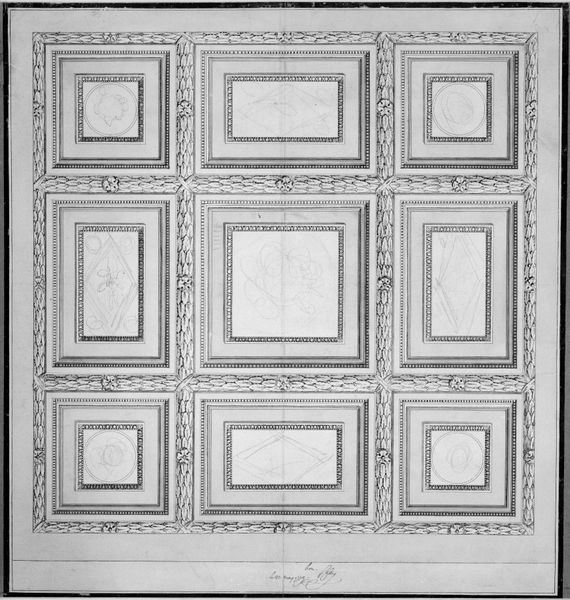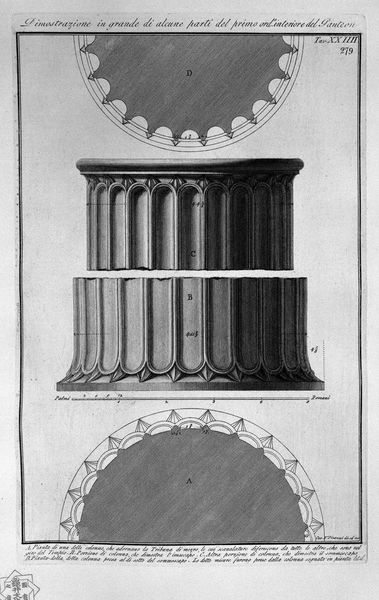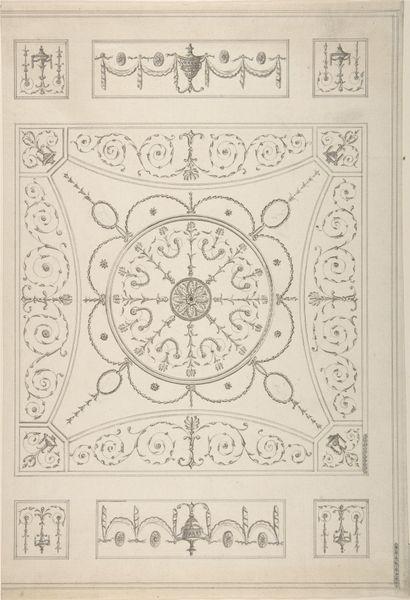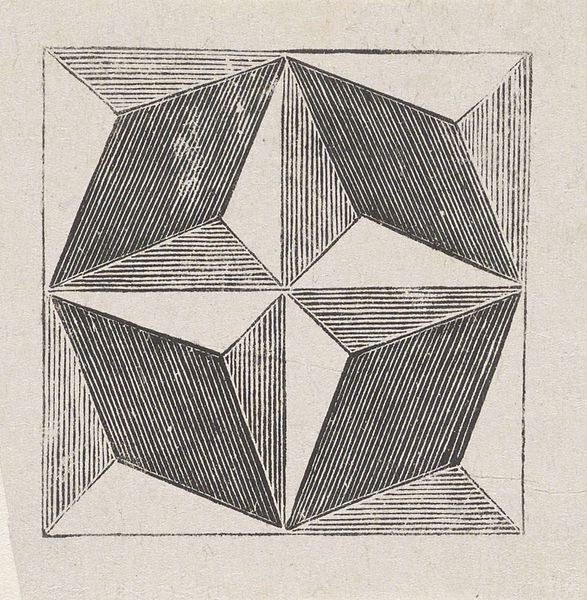
print, engraving
# print
#
pattern
#
geometric
#
ancient-mediterranean
#
line
#
tonal art
#
italian-renaissance
#
engraving
Copyright: Public domain
Editor: Here we have Giovanni Battista Piranesi’s "Chess and Nosetto floor in mosaic at the House of Society", a print of, well, a floor. It looks incredibly detailed and precise, almost mathematical. What strikes you about it? Curator: For me, it’s the process. Piranesi wasn't just depicting; he was documenting the labor and skill embedded in this Roman mosaic floor. He's reminding us that someone quarried the stone, shaped it, laid it piece by piece... Editor: Right, it makes you think about the hands involved. How does that change our understanding of the artwork itself? Curator: By considering the physical act of its creation, we move away from purely aesthetic appreciation. We can start to understand the social and economic context that allowed such artistry to flourish. The labor required signifies wealth, power and organization. Was this craftmanship reserved for the elite? Editor: Interesting! The floor becomes a signifier of social status through the material and means necessary to make it. So, looking at the print now, it's not just an image of an ancient design, but also evidence of this historical means of production, wouldn’t you say? Curator: Precisely. Piranesi is making visible what’s often unseen, and thus, forgotten: the physical and social process behind the object. Editor: That’s given me a completely new perspective. I'll definitely think differently about mosaics – and prints – from now on! Curator: Likewise. It is fascinating how an object could reveal so much when approached by considering production processes and societal structures.
Comments
No comments
Be the first to comment and join the conversation on the ultimate creative platform.
